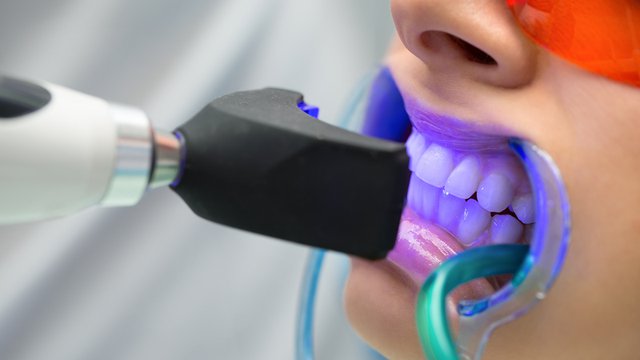

The importance of aesthetic appearance has meant that, in recent years, more and more people have opted to improve their habits and take more care of their bodies.
It is not surprising, therefore, that oral health receives so much attention nowadays. Tooth whitening, for example, has become one of the most in-demand and studied aesthetic treatments (you can train in this field with the degree in Dentistry in Madrid or the degree in Dentistry in Valencia).
We invite you to continue reading this article if you want to know more about what teeth whitening is, what types of teeth whitening exist and how you can take care of your mouth after having this treatment.
Teeth whitening definition
Tooth whitening is a type of dental treatment that aims to eliminate dental stains caused internally or externally and to correct the tone of the tooth enamel, thus obtaining whiter and brighter teeth.
To perform teeth whitening, it is necessary that the professionals in charge are trained for it, such as with the degree in Dentistry in Alicante. In addition, they must be able to follow the diagnosis protocol, treatment planning and monitoring of the results so that the procedure is a success, and the client is satisfied.
Causes of tooth darkening
Poor oral hygiene, smoking, or the consumption of certain products can cause alterations in dental colouring and form stains on the teeth that can be classified into two groups:
- Intrinsic or endogenous stains: these affect teeth in their formation phase and can be caused by the consumption of certain medications, enamel hypoplasia, vitamin deficiencies or fluorosis. Also included in this group are some stains that appear after tooth eruption and are due to factors such as blows, fractures or simply the ageing process.
- Extrinsic or exogenous stains: this type of stains is often caused by the contact of the teeth with pigmented agents present in certain foods and drinks such as wine, coffee or tea, together with other products such as tobacco. In addition, these stains can also be caused by excessive and prolonged use of certain mouthwashes or chlorhexidine-based toothpastes.
Types of teeth whitening
Some of the teeth whitening options available are as follows:
- Teeth whitening by photoactivation: one of the most common and effective methods. This procedure consists of applying a whitening gel in a special mould that is then placed on the teeth. Once the gel is on the teeth, it will be illuminated with LED light that will shine directly on the teeth and activate the product. The results can be seen from the first session.
- Teeth whitening at home: this is one of the most popular whitening treatments due to its simplicity and convenience, if it is carried out under the supervision of a dentist. To carry it out, very fine splints adapted to the size of the mouth are used on which the whitening gel is placed. The patient will have to wear them for 6 to 8 hours a day for a period of 2 to 4 weeks.
- Mixed dental whitening: this is the most recommended whitening for people with very dark staining. It works by combining the two previous treatments. First the treatment is applied in the dental clinic and then it is reinforced at home with the dental recovery gel and a whitener.
- Internal teeth whitening: this is one of the most specific treatments, so it must always be carried out by a professional. It is especially recommended for people with darkened teeth after root canal treatment. This dental treatment requires several sessions and is applied on a specific tooth, not on the entire dentition, introducing a gel and leaving it to act until the staining is eliminated.
Recommendations after teeth whitening
If you want to keep your teeth healthy and clean after tooth whitening, here are some tips you can follow:
- Maintain good oral hygiene: brush your teeth at least three times a day, use dental floss, have regular cleanings at the clinic...
- Use products containing fluoride.
- Do not smoke.
- Reduce consumption of drinks and products that encourage staining, such as coffee, black tea, red wine or dark chocolate.
- Use whitening mouthwashes.
Having a radiant and healthy smile is the aim of many people who seek cosmetic dentistry treatment. If you want to improve your appearance and have clean, white teeth without the need for invasive and complex techniques, this is definitely your best option.
Article published on June 14, 2023